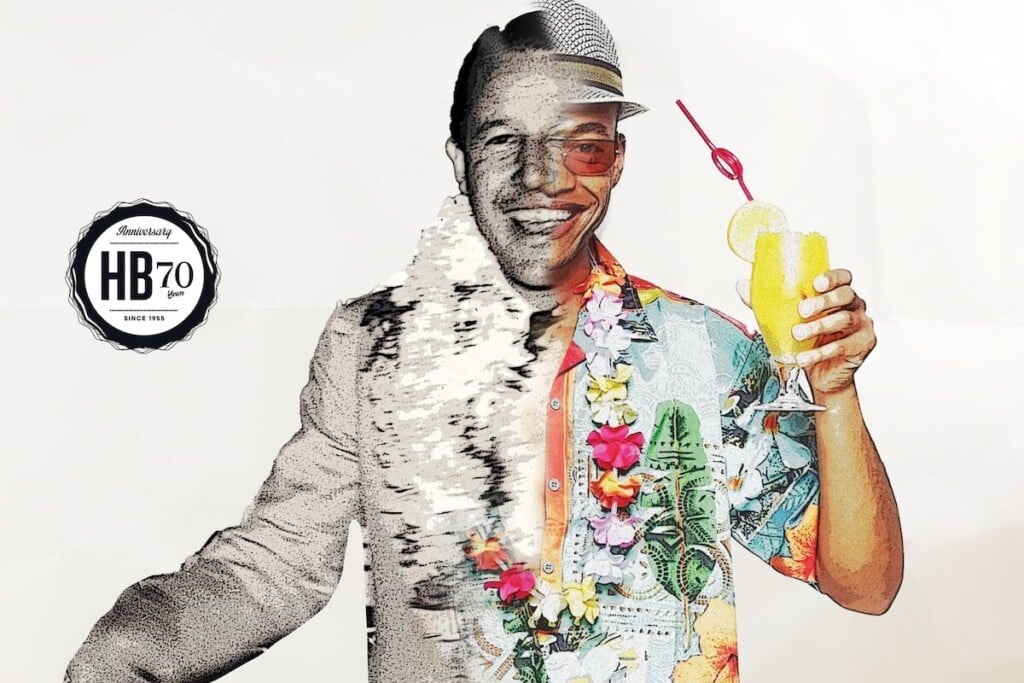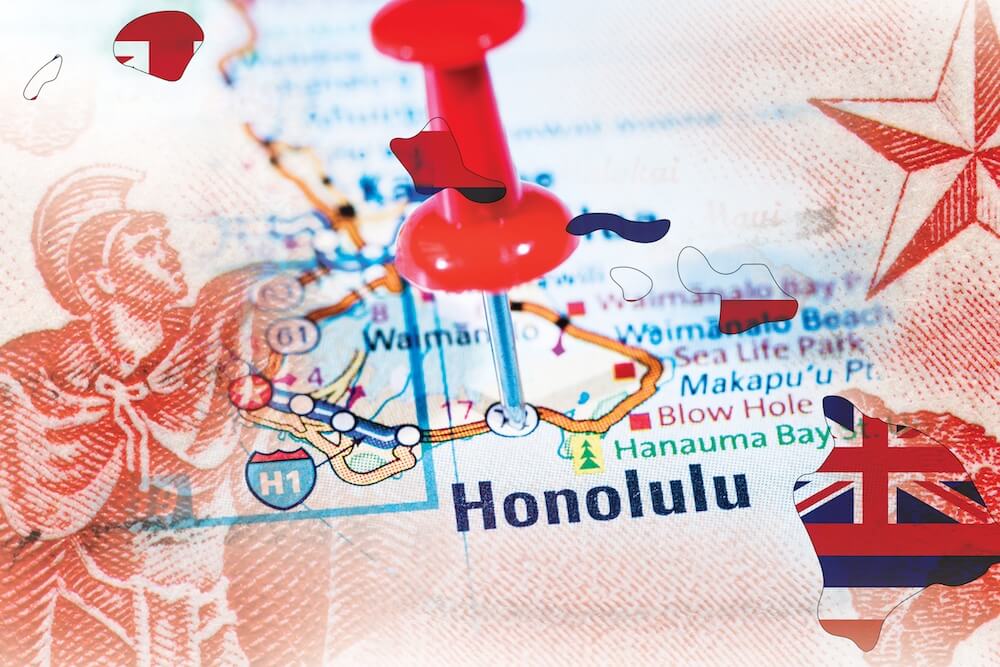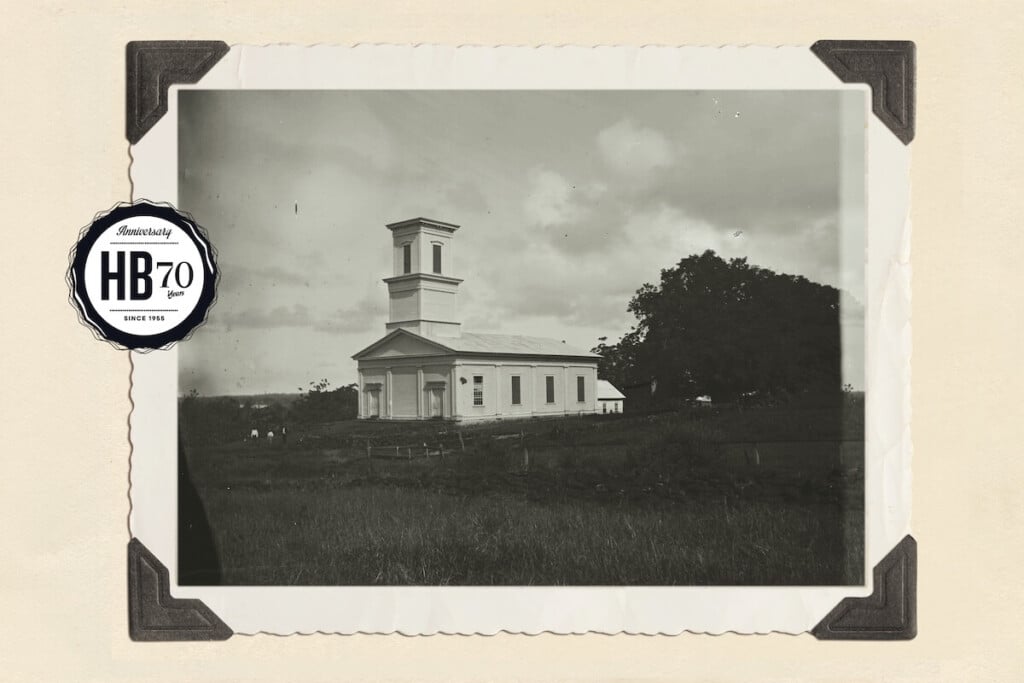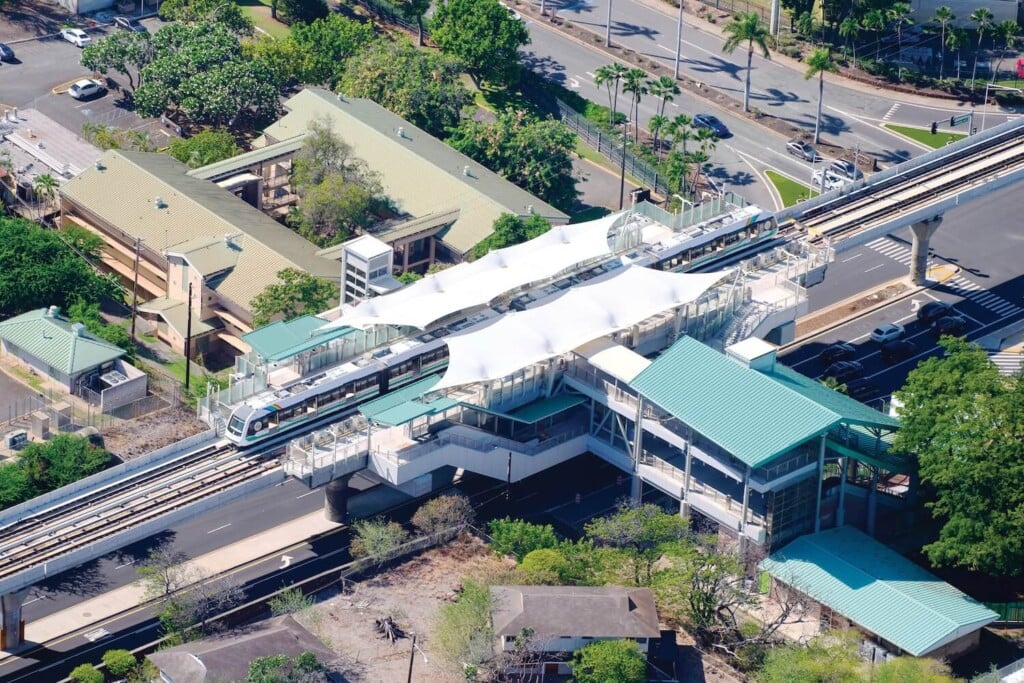Hawai‘i Tourism: A Century and a Half in the Making
Once a destination for the rich and adventurous, the advent of commercial jets in the 1950s made the Islands affordable to the masses.

Hawai‘i’s reputation as an enticing travel destination essentially began by word of mouth and was enhanced by the works of popular writers like Mark Twain, Robert Louis Stevenson and Jack London.
“As early as the Kalākaua years (1874-1891), you do have a tiny bit of tourism,” says John Rosa, a UH professor focused on the history of modern Hawai‘i. But “it’s mostly world travelers, and people who are related to missionaries, or missionaries themselves, or, like Robert Louis Stevenson, they write.”
Even if few people actually traveled here, the alluring image of the islands also spread through postcards and early filmmaking: Thomas Edison’s 1906 film clips of Hawai‘i’s panoramic sights and colorful people, like surfers and paniolo, can still be seen on the internet.
What first accelerated tourism was the opening of Waikīkī‘s first hotel, the Moana, in 1901, and the Royal Hawaiian in 1927, along with the engineering of the Ala Wai Canal in 1928, which enabled further development of Waikīkī in decades to come, Rosa says.
“A lot of it has to do with Waikīkī having a very desirable climate that even Native Hawaiian ali‘i liked. Even Kamehameha lived here in Waikīkī for a while; so did Ka‘ahumanu. This whole ahupua‘a was – outside the month of August – very cool. And you’ve got trade winds, pretty much, and it’s pleasant to live at,” he says.
“And what works for the ali‘i is going to work for the tourists.”
In the first half of the 20th century, most tourists arrived on “white ships” – the term for the luxury ocean liners that sailed between Hawai‘i and the West Coast.
“Developing a Dream Destination”
Rosa and UH economist James Mak say tourism took off after World War II.
“One of the things that World War II did for people was to demonstrate the viability of airline travel,” Mak says. “People said, ‘All these planes are flying around, it must be safe. It must be efficient.’ ”
Mak, a UH professor emeritus of economics, has written reports for UHERO, the UH Economic Research Organization, and in 2008, authored the book “Developing a Dream Destination: Tourism and Tourism Policy Planning in Hawai‘i.”
He says Hawai‘i hosted nearly a quarter of a million visitors in 1959, a tally that surged with the start of jet flights between Hawai‘i and the continent.
That transition to large-group tourism involved a significant degree of government regulation, which persists today. The federal Civil Aeronautics Board was tasked with authorizing the flights and overseeing the airlines to ensure they were properly equipped.
“The CAB was created by Congress in 1938,” he says. “The motor carriers were also regulated – even today here in Hawai‘i, even though in most states they have been dismantled. The tour buses you see here, they still have to be approved by the PUC (state Public Utilities Commission). Existing firms can actually object to granting additional players in the field.”
Although federal authorities retain oversight of matters such as airline mergers because of antitrust concerns, other government intervention has eased over time, beginning with reduced oversight of airline route expansion.
“More and more people began to realize, in the 40 years of the CAB’s existence, that this was counterproductive; it’s not efficient,” Mak says. “They started to open up the various markets, including the air carriers, to open competition.”
Cheaper Flights
Jumbo jets began regular routes to Hawai‘i in 1970, and starting in 1978, airlines were free to set their own prices, he adds, which made flights more affordable.
Concurrently, hotels built up their capacity, Mak says, and the construction crane, the saying went at the time, became the “state bird.”
“Initially, the hotels that were built, they were not by national chains like Hilton and the like. They came later actually,” Mak says.
“The first hotel, as I recounted in my book, was the Armed Forces YMCA Hotel, which (hotelier) Chris Hemmeter took over to build his palatial office building, and which was sold to the state.” The YMCA Hotel is now Capitol Modern: The Hawai‘i State Art Museum.
Even the first large hotels, such as the complex constructed by developer Henry J. Kaiser before it became the Hilton Hawaiian Village, were individual private enterprises.
There was also some synergy with airlines, Rosa notes. “The Ala Moana Hotel, which is fairly large for when it got built, American Airlines helped raise the capital,” he says.
Large group packages were common. Although Japanese visitors ultimately became more comfortable with traveling independently, in the 1960s and ’70s, they benefited from the time savings and language support that group travel provided, Mak says.
“The jumbo jets made it possible, because they were carrying large groups of people, and they were able to move en masse,” he adds. “And this was particularly important among Japanese travelers because they are time-constrained. Take a look at how long Japanese travelers were staying in Hawai‘i – like five days. Efficiency was extremely important.”
The speed of jet travel hastened the decline of ocean liners. According to a paper co-authored by Mak and UHERO’s Andrew Kato, “Technical Progress in Transport and the Tourism Area Life Cycle,” by the time the first Boeing 747 arrived in Hawai‘i in 1970, vacationers arriving by sea represented less than one-half of 1% of Hawai‘i tourists from North America. The last sailing of a white ship followed soon after, in 1978.
Far Fewer Japanese Tourists
The annual tourist tally started from a maximum of roughly 10,000 visitors before World War II, Rosa says. The numbers steadily increased after the war and by 1967, Hawai‘i had hit the 1 million annual visitor mark; by 1988, there were 6 million visitors.
At its peak in the early 1990s, the Japanese market alone topped 2 million a year, Mak says, but it has shrunk to a fraction of that today. For all of 2023, there were 572,979 visitors from Japan.
In those early boom years, Hawai‘i was marketed to potential tourists in a straightforward fashion, says Frank Haas, a marketing consultant and former VP and director of marketing for the Hawai‘i Tourism Authority.
“In the early days of volume tourism to Hawai‘i, the big tour operators were selling Hawai‘i as a fun-sun-sand-surf destination,” Haas says. “There wasn’t much competition from other markets. But as people become more aware of the nuances of the place, you can fold in more nuanced messaging.”
There have been other major changes in recent decades. For example, apps and social media have led to the increase of vacation rentals within residential neighborhoods.
Haas says microtargeting enabled by the internet has allowed the industry to market to visitors more specifically.
“The message went from ‘Sun, sand, surf, Hawai‘i is a playground’ to, over time, what was different and special about the place,” he adds. “And the last 10 years, we can now talk to people interested in different things.
“The market went from mass market to particular markets. Now you can find people interested in bird-watching, heritage tourism, agritourism, voluntourism – these narrowly defined interests that we can connect with.”
“Those Are Wish Lists, Not a Plan”
Marketing, as well as the development of the Hawai‘i Convention Center, are two aspects of the otherwise privately developed visitor industry that have taken significant government investment, Mak says.
According to the Kato/Mak paper, in 1988, tourism’s share of the state’s gross domestic product peaked at 24.7% and has been declining ever since.
Hawai‘i’s economic slump in the 1990s, driven partly by the bursting of the Japanese economic bubble in 1991, prodded the tourism industry to accept a hotel room tax to help pay for marketing and to finance the convention center, all in hopes of boosting visitor numbers and spending, Mak says.
Another long-standing arena for government involvement has been tourism planning, he says. That’s only going to intensify as the industry works to adapt to changing trends through destination management.
Whether or not this will work is uncertain.
“Today we talk about sustainable tourism,” Mak says, “but Hawai‘i’s tourism plan in 1976, which became the Hawai‘i Tourism Functional Plan in 1980, that was truly what sustainable tourism was all about.
“On the other hand, these plans express the community aspirations for tourism. That doesn’t mean they’re actually carried out.”
Today, he says, “the Legislature is really hot on the DMAPs – the destination management action plans – even though (economist) Paul Brewbaker, Frank Haas and I don’t think it’s a plan. Those are wish lists, not a plan.”






